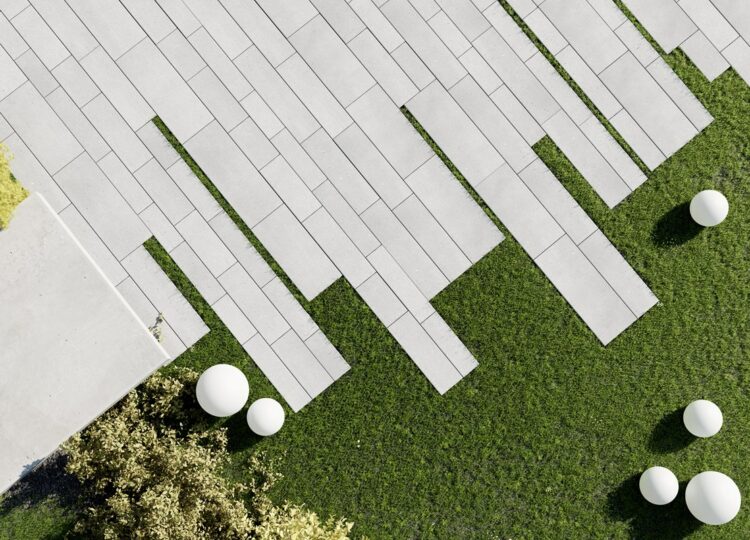
If you find paving stones or slabs that meet your visual expectations, i.e. simply put, you like them and they match your house, it is necessary to check their thickness, an important feature. Why?
Walkways, driveways and roads made of paving stones or slabs are subject to various loads: people, bicycles and cars move about on them. Paving stones and slabs must therefore be durable and not crack under these loads. It is, among other things, the right choice of product thickness that will make the surface last.
A breakdown of paving stones and slab thicknesses based on the loads to which the pavement made of them will be subject is shown in the following table:
| TRAFFIC TYPE | SURFACE TYPE | RECOMMENDED SLAB THICKNESS |
| PEDESTRIAN | E.g. walkways, paths, alleys, terraces | 4 – 8 cm |
| PEDESTRIAN, BICYCLE AND VEHICLE TRAFFIC UP TO 3.5 TONS | E.g., home driveways, squares, and car parks with low passenger vehicle traffic | 6 – 8 cm |
| VEHICLE ABOVE 3.5 TONS | E.g. streets, squares and roads with heavy truck traffic | 8 – 10 cm |

A chamfer is nothing more than a beveled edge of a paving stone. Its purpose is to protect the edges of the product from damage in the form of chips and dents, both during installation and intensive use. Depending on whether the paving stone has a chamfer or not, you get a different effect of uniformity and naturalness of the paved surface. This is important because of the intended use of the surface. You should consider which product suits your needs, taking into account the following characteristics:
| PAVING STONES WITH A CHAMFER | PAVING STONES WITHOUT A CHAMFER | PAVING STONES WITH A MICRO-CHAMFER |
| Least uniform plane with visible grout pattern | More uniform planes, least visible grout pattern | More uniform planes, moderately visible grout pattern |
| More natural character, surfaces better resemble stone | Less natural character, surfaces often resemble a smooth slab | Moderately natural character |
| Rather traditional style | More modern style | More modern style |
| Edges more resistant to heavy loads. | Easily damaged edges: requires an experienced paver | Reduction of edge damage |
| Noisier in operation, may impede movement of children, elderly, disabled; not suitable for use on cycle paths. | Quieter, easier movement and snow shoveling | Quieter, easier movement and snow shoveling |
| Old Bruk. Paving Slab, Hollow Slab industrial paving stones (Brick, Double T). | Wena, Fantazja, Grand, Trend, Mosaic, slabs: Flat | Mandal®, Vjetra®, Nova’k, Bruk Simple, Metro, Metro XL, slabs: Bruk’us, Geometrika, Kwadra, Medio, Magnum, Simple, Solid, Style, ecoSolid, Multi. |

Around your house, you can lay down concrete products of any size. Small paving stones will be perfect for a large square or a driveway, and large slabs are used today for modern garden paths or narrow walkways. What is the selection of the proper size of paving stones for our property about? As is usually the case, the devil is in the details.
Paving products are quite expensive. Therefore, when choosing paving products, do not be guided only by trends or taste, but pay attention to visual and practical aspects. Only the combination of all these elements will ensure that the executed surface will satisfy your needs and expectations in every respect. It is the visual and practical aspects that are the basis of recommendations to use the relevant size.
Assembled surfaces should be comfortable to use and their assembly should not be expensive. It is generally assumed that: